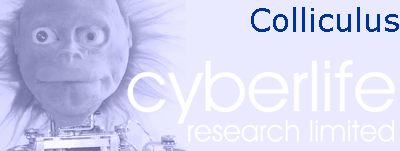
|
|
|
The human SC evolved from a part of the brain that in amphibians is called the Optic Tectum. This is at the top of a frog's visual system, but near the bottom of our own. In frogs the OT controls many aspects of visually guided behaviour, such as firing the tongue towards a small moving object (potential food) or leaping away from a large moving object (a potential predator). In humans, similar sudden movements in the visual field cause reflex eye and head responses that enable us to seek out or flinch from the source of the stimulus (although they don't usually cause us to flick our tongues out!). The SC essentially performs a transformation of information from eye-centred coordinates into head- and body-centred coordinates, thus calculating where to move the eyes to centre the stimulus on the fovea (the narrow region of our retina where we see most clearly). The likelihood is that other parts of the brain, notably V1 and the FEF in the cortex, also use the SC to compute eye-centred to head-centred transformations for controlling more sophisticated eye movements, such as tracking an object or looking for one's coffee cup. Lucy has a model of the Superior Colliculus because this is an important stage in all visually-guided behaviour. It was also a first testbed for the use of "servo maps" - an important overarching concept throughout Lucy's brain. The diagram above shows Lucy's first SC, and desribes how 'bumps' of nerve activity on the surface of the maps compute the muscle movements needed to steer Lucy's eyes towards a target. The diagram below shows a second version of Lucy's SC, which was more capable and generally applicable, but this was still in development when Lucy MkI was abandoned in favour of Lucy MkII.
|
Copyright © 2004 Cyberlife Research Ltd. |